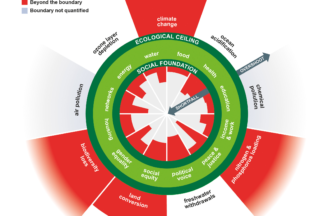In an earlier post I asked: How can business, a business, downscale the Doughnut and make it operational?
In this post I look at three tools that praise themselves of being either part, or even all, of the support a business needs on the journey to integrate the Doughnut Economics concepts. Namely: Science-based Targets (SBTs), the B Impact Assessment(BIA), and the Future Fit Business Benchmark (FFBBM).
What are their fundamental differences and similarities?
Are they indeed a tool to help on the path to keeping within the Doughnut boundaries?
It's a funny state of things: One where investors complain that ESG data is not standardised; where at the same time companies – and notably their boards – complain that investors do not ask for data in a standardised way. And where the very same companies and boards nonetheless prioritise proprietary measurement systems over any other one for their own supply chains and products.
It's a paradox. One that is not efficient, effective, or conducive to impact.
A call to leave politics to the side, focus in impact, and standardise, standardise, standardise.
Large companies and institutional players are challenged to assess and calculate their carbon footprint. But they typically have the means to hire experts – in-house or consultants – and buy licenses of useful tools.This applies similarly to larger-sized SMEs. But what about distinctly small companies or indeed even individuals? How can they get a guesstimate on their carbon footprint, and possibly even some pointers how to do better going forward? Hence, here a short list of such calculators, both for individuals as well as for small companies.




